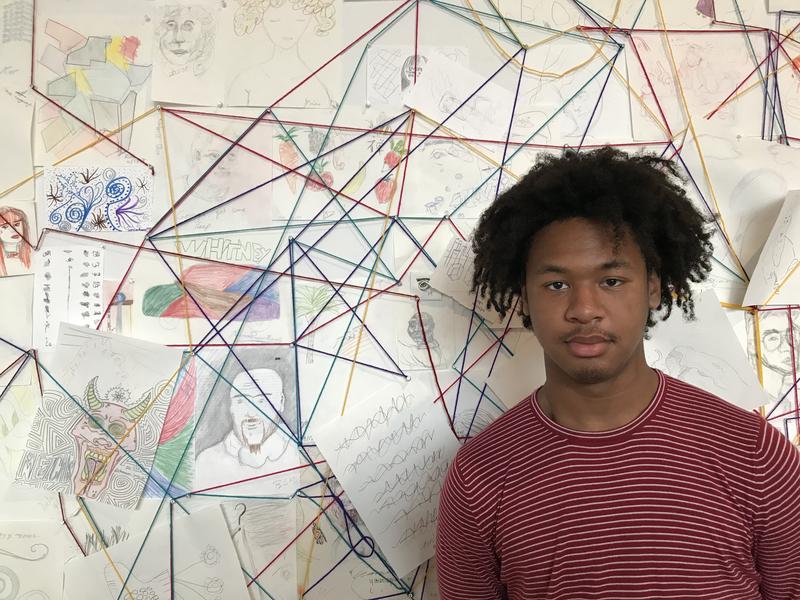
The Whitney Biennial ends June 11, and with it an unusual collaboration between the museum and a New York City public school.
For the duration of the show, students from the Lower Manhattan Arts Academy (LoMa) have had art class in the museum. Their desks and supplies were all relocated from their Lower East Side classroom to a space adjacent to one of the museum's main galleries.
And the classroom at the Whitney isn't just for making art: it is art — part of Chemi Rosado-Seijo's contribution to the show, called Salón-Sala-Salón (Classroom/Gallery/Classroom). The artist forged a similar partnership a few years ago in Puerto Rico. At the Whitney, he attended many of the classes, working with the students as they made prints, portraits and kites. Pieces by artists from the Biennial are also on display back at their school. "I really hope for them to get at least the feeling of being on the same level as the other artists, or a student being as important as an artist," Rosado-Seijo said.
Justin Capers, who's in the 11th Grade at LoMa, said it was an "honor" to see his pieces hanging up in the museum's classroom. "Not many people can say they have artwork in the Whitney," he said.
But the students said there were some unexpected challenges. Museum curators wanted to make sure the students themselves were never on display, so they only had class at the Whitney on Tuesdays, when it's closed. Visitors were invited to explore the classroom and the students' art when they weren't there. Some used the students' supplies to make their own art, sometimes by painting over students’ work.
"While that was a cool idea it wasn’t really a part of what we were trying to do in this space. And we kind of were forced to accommodate that," said student Debora Javier. "It made me understand the difficulties that artists have when presenting their artwork and trying to make the public understand."
Ultimately, the students wrote a letter to museum-goers encouraging them to create works of their own, but to be respectful of their art and space. Teacher Julie Roinos said she was impressed by their commitment to the project. "I think the thing they've done wonderfully is show up every week and make something and not worry about what the public thought," she said. "That's ridiculously brave."
